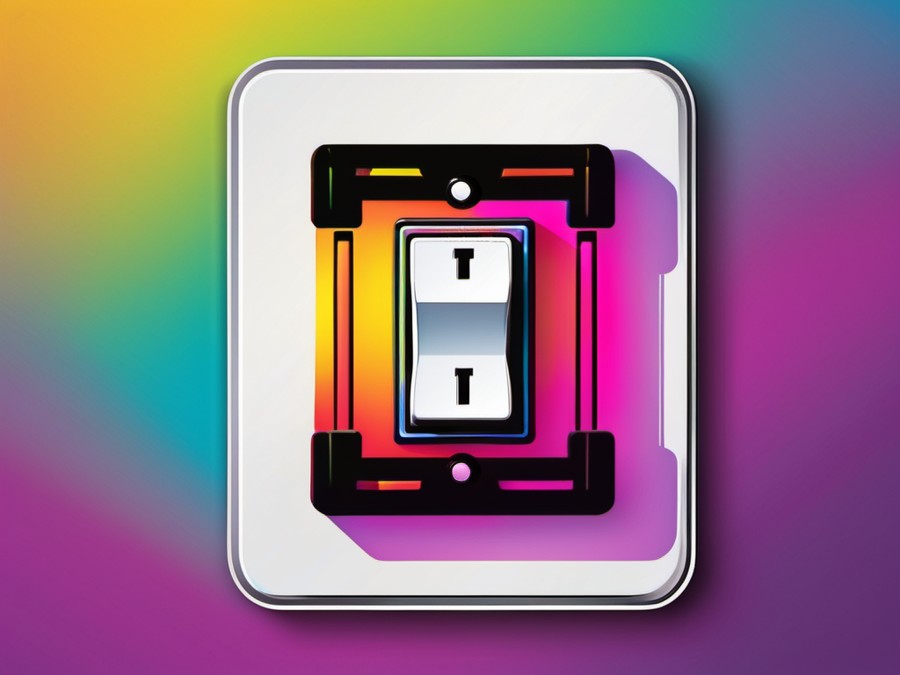· Charlotte Will · Switches · 7 min read
What is a Wall Switch and How to Replace It?
Learn how to identify, replace, and troubleshoot wall switches with our comprehensive guide. Ensure safety and efficiency by following these step-by-step instructions.

Welcome to our comprehensive guide on understanding wall switches and replacing them safely. Whether you’re a DIY enthusiast or just curious about the inner workings of your home, we’ve got you covered. So grab a coffee and let’s dive in!
Understanding the Basics of Wall Switches
What is a Wall Switch?
A wall switch is an electrical device that controls the flow of electricity to a specific part of your home, such as lights or outlets. It’s the simple yet essential gadget that lets you turn things on and off with a flick.
Types of Wall Switches
Wall switches come in different flavors, each with its own function:
- Single-Pole Switch: This is the most common type. It controls a single light or outlet from one location, like the standard switch you find in most rooms.
- Three-Way Switch: These are used when you want to control a light from two different locations. Think of a hallway where you can turn the lights on or off from both ends.
- Four-Way Switch: This is less common but useful for controlling a light or appliance from three different locations.
The Importance of Wall Switches in Home Electrical Systems
Wall switches play a critical role in home safety and convenience. They allow you to control electrical devices without having to plug or unplug them manually, reducing the risk of accidents. Plus, they add a layer of functionality to your home’s electrical system, making it more user-friendly.
Why Replace a Wall Switch?
Common Issues with Old or Faulty Switches
Old switches can develop a range of problems. You might notice flickering lights, or the switch may feel hot to touch. Sometimes, it simply stops working altogether. These issues not only cause inconvenience but can also pose electrical hazards.
Benefits of Replacing a Wall Switch
Replacing an old switch can breathe new life into your home’s electrical system. You get better control, improved safety features (like GFCI protection), and even fancy new styles that add a touch of modernity to your decor.
Preparing for the Task
Safety First: Turning Off the Power Supply
Before you start, safety is key. Locate your circuit breaker box and turn off the power supply to the switch you’re working on. This ensures that there’s no live current flowing through the wires while you work.
Gathering Necessary Tools and Materials
Here’s what you’ll need for the job:
- Screwdriver: A flathead or Phillips screwdriver, depending on your switch plate.
- Voltage Tester: To double-check there’s no live current.
- Wire Nuts: These are used to secure and connect wires together.
- Switch Plate: The decorative cover for your switch.
Preparing the Workspace for a Smooth Replacement Process
Clear your workspace. You’ll be handling wires, so make sure there’s nothing flammable or conductive nearby. A well-lit area is also crucial for seeing what you’re doing clearly.
Step-by-Step Guide to Replacing a Wall Switch
Removing the Old Wall Switch
Unscrewing and Taking Off the Switch Plate
Start by removing the switch plate. This usually involves unscrewing a few screws that hold it in place. Sometimes, you may need to pry it off gently with a flathead screwdriver if it’s stuck.
Disconnecting Wires Safely
With the switch plate removed, you’ll see the wires connected to the switch. Using a voltage tester, ensure no power is flowing through them. Once confirmed safe, carefully disconnect the wires from the old switch. Keep a note or take a picture of how they were connected for reference later.
Preparing the New Wall Switch
Checking Compatibility with Your Existing Wiring
Ensure the new switch is compatible with your existing wiring setup. Most standard switches will be, but always double-check for peace of mind.
Installing the New Wall Switch
Connecting Wires Properly
Reconnect the wires to the new switch, following the same pattern as the old one. Typically, you’ll have a black wire connected to the brass screw (common), and a white wire and bare copper wire to their respective spots.
Securing the Switch in Place
Once reconnected, gently push the switch back into its box. Secure it with the provided screws, ensuring it’s snugly in place but not overly tight.
Testing the New Wall Switch
Using a Voltage Tester to Ensure Proper Functioning
Before you pop the switch plate back on, use your voltage tester to ensure that power is flowing correctly and everything’s working as it should.
Final Steps: Securing the Switch Plate and Cleaning Up
With everything tested and working, secure the switch plate back in place. Give your workspace a quick clean-up, ensuring no tools or debris are left behind.
Troubleshooting Common Issues
Switch Does Not Turn On
If your new switch doesn’t turn on, double-check the connections. Ensure all wires are securely connected and that power is flowing to the switch.
Light Flickers When Switch is Used
Flickering can be a sign of loose or damaged wires. Inspect the connections and make sure everything is tight and in good condition.
Sparking or Smoking Wall Switch
If you notice sparks or smoke, stop immediately. This is a sign of serious electrical issues that require professional help.
When to Call a Professional
Recognizing Situations That Require Expert Help
Replacing a wall switch is generally safe and doable for most people, but there are situations where a professional’s touch is needed. If you’re unsure about the wiring, face unexpected issues like sparking or smell smoke, it’s time to call in the experts.
The Value of Consulting an Electrician
Electricians bring years of experience and training. They can identify potential problems you might miss, ensuring your home’s electrical system is safe and efficient.
Preventive Maintenance for Longer Lifespan
Regularly Checking Your Wall Switches
Make it a habit to regularly check your wall switches. Look for signs of damage, looseness, or anything unusual. A little preventive maintenance goes a long way in keeping your switches (and home) running smoothly.
Proper Usage and Care Tips
- Avoid Overloading: Don’t connect too many devices to a single switch. This can cause overheating and other issues.
- Keep Them Clean: Dust and dirt can accumulate over time, affecting performance. A quick wipe with a damp cloth periodically keeps them clean and efficient.
Conclusion
And there you have it—a complete guide on wall switches and how to replace them. Whether you’re tackling a faulty switch or upgrading to something sleek and new, remember: safety first, always.
FAQs
How Often Should Wall Switches Be Replaced?
Regularly inspecting your wall switches is a good practice. If you notice any signs of wear or malfunction, it’s time to replace them. Generally, with proper care, switches can last for many years.
Is It Safe to Replace a Wall Switch Yourself?
Replacing a wall switch yourself is generally safe if you follow the proper steps and ensure the power supply is turned off. However, if you’re unsure or encounter any issues, it’s best to call a professional.
What If I Encounter Live Wires During Replacement?
If you encounter live wires during replacement, stop immediately. This indicates a serious issue that needs professional attention to ensure safety.
Can I Paint Over a Wall Switch?
It’s not recommended to paint over wall switches. The heat generated by the switch over time can cause the paint to peel or crack, leading to a messy situation.
What Are Some Energy-Efficient Options for Wall Switches?
Investing in energy-efficient wall switches can save you money and reduce your carbon footprint. Options like dimmer switches or smart switches are great choices for energy efficiency.
By keeping these tips in mind, you’ll be well on your way to mastering the art of wall switch replacement. Happy switching!
Interested in more home electrical tips? Check out our article on What is a PoE Switch and How Does It Benefit Security Monitors?




